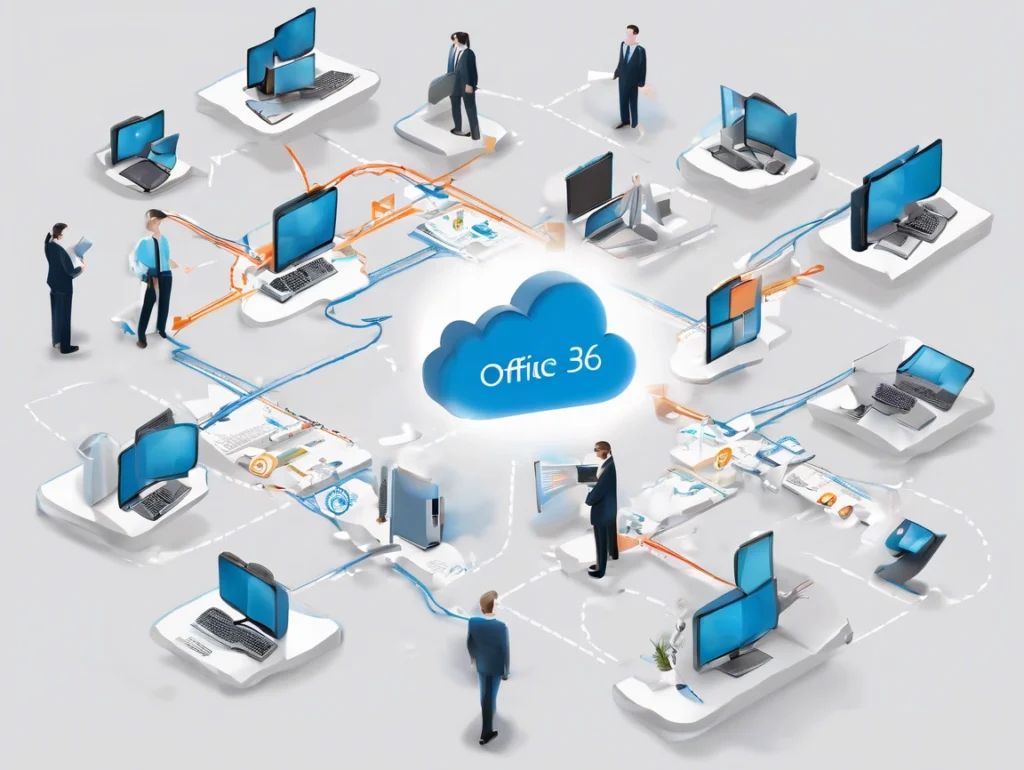Migrating to Office 365 is a strategic move for many businesses, but choosing the right migration method is key. One powerful option is a Hybrid Migration, which allows organizations to move to Office 365 gradually while maintaining coexistence with their on-premises Exchange environment. In this guide, we’ll explore what a hybrid migration is, its benefits and drawbacks, and how to set it up step-by-step.
What Is a Hybrid Office 365 Migration?
A hybrid migration connects your on-premises Exchange server (2010 or newer) with Microsoft 365 (formerly Office 365), allowing a seamless experience between the two environments. Users can be migrated in batches, and coexistence features like shared calendars, global address lists, and mailbox moves remain intact.

When Should You Use a Hybrid Migration?
You have more than 150 mailboxes
You need to move mailboxes in phases
You want to keep some mailboxes on-premises
You require rich coexistence features during migration
Pros of a Hybrid Migration
✅ Seamless Coexistence
A hybrid migration allows users to access shared calendars and view free/busy info across cloud and on-premises mailboxes.
✅ Gradual Transition
You can migrate users in batches, minimizing disruption and giving IT teams more flexibility.
✅ Retain Control
Continue to manage on-premises mailboxes while integrating with Office 365’s cloud services.
✅ SSO and Directory Sync
Use Active Directory Federation Services (AD FS) and Azure AD Connect for single sign-on (SSO) and directory synchronization.
✅ Ideal for Complex Environments
Hybrid migrations are suited for large enterprises or organizations with compliance or legacy system dependencies.
Cons of a Hybrid Migration
❌ More Complex Setup
Hybrid deployments require careful configuration and ongoing maintenance of both on-prem and cloud systems.
❌ Higher Initial Cost
Upfront investment in configuration and tools (like Azure AD Connect and SSL certificates) can be significant.
❌ Requires Exchange 2010 or Newer
Older Exchange servers aren’t supported, so upgrades may be necessary before migration.
❌ Maintenance Overhead
Running two environments means additional patching, monitoring, and troubleshooting.
How to Set Up a Hybrid Migration: Step-by-Step
Here’s a simplified overview of the hybrid migration process:
Step 1: Prepare Your Environment
Ensure you have Exchange Server 2010 or later
Update your Exchange servers to the latest cumulative updates
Acquire and install a third-party SSL certificate (not self-signed)
Step 2: Install Azure AD Connect
Download and install Azure AD Connect
Set up directory synchronization between on-premises AD and Azure AD
Step 3: Configure Hybrid in the Exchange Admin Center
Use the Hybrid Configuration Wizard (HCW) in the Exchange Admin Center
Choose the appropriate hybrid option: Full Hybrid or Minimal Hybrid
Step 4: Verify Mail Flow and Autodiscover
Update DNS records (MX, SPF, Autodiscover)
Test email flow between on-premises and Office 365 mailboxes
Step 5: Move Mailboxes
Use the Exchange Admin Center or PowerShell to create migration batches
Monitor migration progress and verify data integrity
Step 6: Decommission On-Prem Exchange (Optional)
Once all mailboxes are migrated and stable, you can plan for decommissioning
Note: Some hybrid features may require keeping at least one Exchange server on-prem
Is Hybrid Migration Right for You?
A hybrid migration isn’t for everyone. It’s best suited for mid-to-large organizations that:
Need coexistence
Want a phased rollout
Have regulatory or technical reasons to maintain some mailboxes on-prem
For smaller environments or simpler needs, alternatives like Cutover Migration or Staged Migration might be more appropriate.
Final Thoughts
A hybrid Office 365 migration offers a powerful bridge between your on-prem Exchange and Microsoft 365, enabling flexibility, continuity, and control. While it’s more complex than other methods, the benefits often outweigh the challenges—especially for larger organizations.
Looking for a new IT Partner?
Talk to us about your current business needs and future IT goals, so we can help choose the right technology to move your business forwards.
